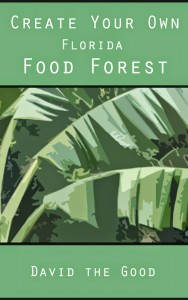 This is just a quick note to let you all know that my book Create Your Own Florida Food Forest is still up for free on Amazon through the end of today, then it goes back on sale at full price.
This is just a quick note to let you all know that my book Create Your Own Florida Food Forest is still up for free on Amazon through the end of today, then it goes back on sale at full price.
Even if you’re not in Florida, you should find parts of the book helpful and/or inspiring.
In related news, my new book Totally Crazy Easy Florida Gardening is still at the top of the charts in its category on Amazon. I’ve received some great responses from readers so far. Thanks to all of you who picked up a copy! If you liked it, please leave a review on Amazon so others will know it’s worth buying. Reviews sell books!
And if you haven’t gotten a copy yet… remember, it’s only $2.99 and I guarantee it will transform your Florida garden.
For those who have asked, a paperback version should be out in a month or so – my editor has been working on the formatting.

1 comment
Hey, don’t know if you remember me from V.P. or not–I mostly lurk. I hadn’t bought this because Idaho is not climatically like Florida, but at this price point it was a fun read. (I did get Compost Everything, mostly because the chapter about composting with chickens made me laugh and wonder how you get anything away from your chickens to compost–mine eat it all! Turns out you’re as big a fan of chicken manure as I am.)
Anyway, conventional wisdom up here is spread the trees out and keep ’em spread, water only under the trees and let the land in between go dry. We get about 11″ of precipitation a year and have a small water right, enough to do that, on what of our acreage is cultivatable at all. (We have several acres of scree slopes.) Idaho, 4600′ elevation, give or take a hundred depending on where on the property. Usually something between zones 2-5.
Do you have any recommendations about where to go look for more information about food forests in my conditions? I picked up a few trees and gooseberries cheap that I need to get in the ground tonight before it snows, but I can always infill between them later–semi-dwarf fruit trees, that’s all anyone sells here. Last winter we got temps over sixty for a couple days in February which killed most everything domesticated except a trio of cherry trees, a 60+ year old standard apricot that has trouble not getting its blossoms frosted, and three apples that are very happy campers, some currents and sand cherries, plus wild plums, elderberries, and chokecherries.
Comments are closed.